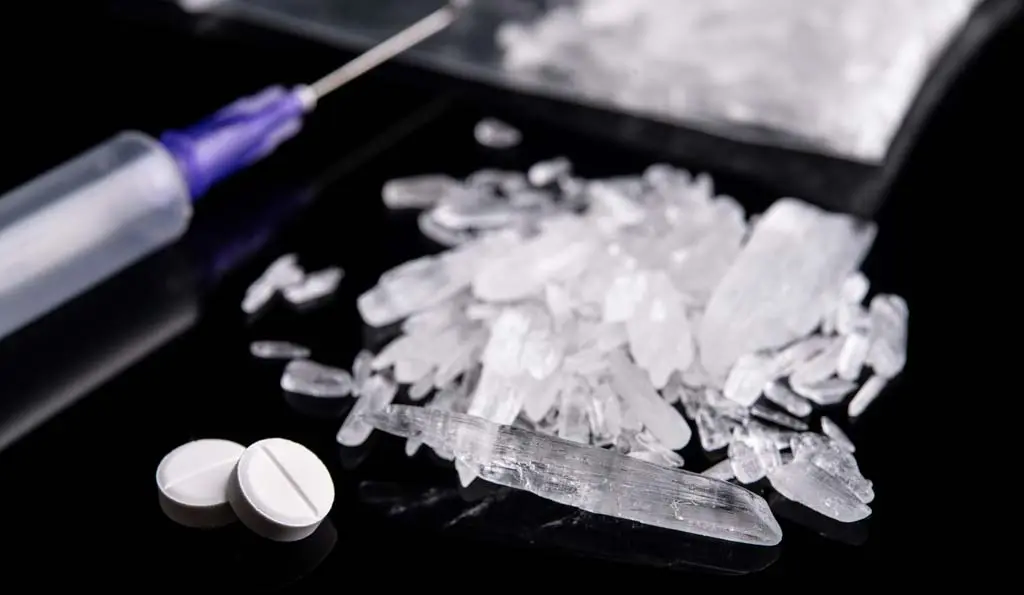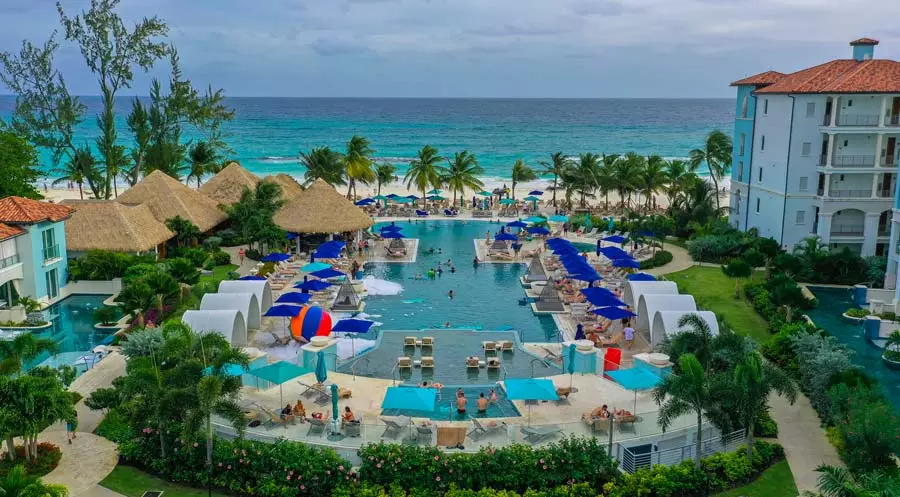What Happens During Methamphetamine Detox in Hawaii?
Methamphetamine is readily available in Hawaii and abuse is a significant problem. As a result of increased meth purity and super meth labs, many people use the drug in its most potent form. Like other parts of the country, Hawaii is witnessing rising numbers of meth overdose cases and deaths.
Meth abuse leads to a wide range of severe mental and physical consequences. However, making the decision to stop using this drug can be very challenging. If you are struggling with a meth addiction, quitting cold turkey can put your life at risk. To safely get meth out of your system and begin the journey towards recovery, you’ll need professional help.
Let’s take a look at what happens during meth detox and how you can ensure you’re as safe and comfortable as possible. We’ll also discuss what to expect from our Hawaii meth detox program.
What Is Methamphetamine?


Methamphetamine is a highly addictive drug that falls into the category of stimulants. It causes a burst of energy and feelings of euphoria. Its effects are stronger and longer-lasting than those of amphetamine.
Meth often appears as a crystalline powder that’s bitter and odorless. The powder is usually white or off-white but it can also be bluish, pink, yellow, or reddish. When meth has the appearance of bluish-white rocks or glass fragments, it is known as crystal methamphetamine.
Meth may also come in the form of pills or a liquid. It can be smoked, swallowed, snorted, or injected depending on the type the individual uses.
It is relatively easy for people to make meth in illegal drug labs. Unlike most other illegal drugs, the ingredients needed for meth can be bought at convenience stores, pharmacies, and hardware stores.
The History of Meth in Hawaii
It is believed that crystal meth first appeared in Hawaii in the 1980s. This is around the same time that it first emerged on the mainland. However, experts on the islands believe the drug arrived in Hawaii from Asia first and it was subsequently sent to the continental United States.
Meth abuse in Hawaii exploded in the 21st century. At one point, Hawaii’s crystal use per capita was the highest in the country. This could be due to several factors including:
- The state’s geographic location between Asia and the US mainland
- The extent of poverty
- Inadequate substance abuse prevention and rehabilitation services
Meth was known as the poor man’s cocaine since it provided the same sort of high but was much cheaper and easier to locate.
What are the Effects of Meth Use?


People who use stimulants initially feel more alert and energetic. They experience feelings of euphoria thanks to a spike of dopamine and they may lose interest in eating and sleeping.
People often don’t realize that they’re becoming dependent on meth. However, the burst of happiness the drug creates is fleeting. Since individuals want to experience that euphoria time and time again, they need to use more meth. Before long, dependence and addiction can occur.
With addiction comes the risk of overdose since people usually need to use larger and larger doses to get the effects they seek. Also, since meth is manufactured illicitly, there’s no way to know how potent a batch is or which contaminants it contains.
Meth impacts the central nervous system, respiratory system, and cardiovascular system and it can have a variety of negative side effects including:
- Paranoia
- Irritability
- Confusion
- Skin sores
- Angry outbursts
- Muscle spasms
- Problems with concentration, coordination, thinking, and memory
Experience True Healing
Our deeply-caring staff and the surrounding natural beauty offer an unparalleled healing experience.
What are some Warning Signs of Meth Dependence?
You may be looking for indicators that a loved one is abusing meth or that they’ve become dependent on it. The signs of meth dependence will vary from one person to another. The nature and severity of the symptoms depend in large part on the method of administration and how much the individual uses.
However, a person who is addicted to meth may suddenly lose interest in things that once mattered to them. They may prioritize drug use over their relationships, hobbies, career, or education. They may also display a wide range of psychological and physical symptoms.
Psychological Signs of Meth Dependence
People who are dependent on meth may experience:
- Memory loss
- Problems with visual memory
- Psychosis
- Paranoia
- Irritability
- Insomnia
- Mood swings
- Aggression
- Reduced gross motor skills
- Slow motor skills
- Inability to learn new skills
- Hyperactivity and lots of energy
- Tweaking
- Intense meth cravings
- Drug-seeking behavior
Physical Signs of Meth Dependence


As with any substance use disorder, there are physical signs of meth dependence. These include:
- Dilated pupils
- Facial sores
- Scratching
- Tooth decay (commonly known as meth mouth)
- Violent behavior
- Seizures or convulsions
- Increased libido
- Extreme weight loss
- Rapid heart rate
- Elevated body temperature
- High blood pressure
- Liver damage
- Withdrawal symptoms
- Heart attack
- Stroke
Is Detox from Meth Needed?
Detoxification is a necessary first step in overcoming meth dependence and addiction. It is the process by which the body rids itself of an addictive substance. Even though meth detox can result in uncomfortable and painful withdrawal symptoms, it’s worth it. The benefits of fighting meth addiction outweigh the temporary discomfort associated with detox. However, it is essential that detox takes place under medical supervision.
Symptoms tend to kick in about 24 hours after the individual last used the drug. Fatigue may be the first symptom and it may be followed by severe feelings of depression. Since people who use meth tend to forgo sleeping and eating, their appetite and need for sleep usually return during withdrawal. Detoxing from meth can take about 50 hours and withdrawal symptoms may continue for weeks or even months in long-term users.
A General Meth Withdrawal Timeline
Each individual will have a unique experience during withdrawal. However, the symptoms can follow a rough sequence.
During the first 48 hours after the last dose, individuals experience what is known as a crash. Energy and cognitive function decline and nausea, abdominal cramps, and sweating are common.
Days 3 to 10 may be characterized by anxiety, depression, and extreme fatigue. Some people also experience muscle aches, shaking, and intense drug cravings. The acute phase typically peaks during this period but the symptoms start to dissipate after a week.
During days 14 to 20, most of the physical symptoms start to go away but intense drug cravings can linger. Ongoing fatigue and depression are also common.
By the end of the first month, the worst of the withdrawal symptoms have typically passed. Those that remain will lessen as time goes on. However, depression and anxiety can stick around for months. Some people experience depression for up to a year.
Post-Acute Withdrawal Symptoms from Meth
Withdrawal doesn’t always go the way we outlined above. Some people experience symptoms long after the typical detox period would typically be over. Post-acute withdrawal syndrome (PAWS) lasts for between six months and two years after the person last uses meth. Symptoms of PAWS include:
- Fatigue
- Low energy
- Depression or sadness
- Anxiety
- Chronic pain
- Insomnia
- Mood swings
- Low libido
- Challenges with impulse control
- Problems with learning, problem-solving, and memory
These symptoms may come and go and they may be worse when the individual is under stress. Symptoms of PAWS can be controlled with therapy and medication.
Experience True Healing
Our deeply-caring staff and the surrounding natural beauty offer an unparalleled healing experience.
What Are the Risks of An At-Home Meth Detox?
It is not a good idea to attempt to detox at home, given how severe the withdrawal symptoms can be. When the mind and body become dependent on meth, it is very difficult to function without it unless you get professional assistance. Unsupervised detox is often ineffective. Since the symptoms are so uncomfortable, some people need urgent medical attention. Others give in to their cravings in an effort to get relief.
It is important to note that getting meth out of your body is only the first step in the journey towards full recovery. After you detox, you need to learn the skills that will help you to stay away from the drug in the long term. Therefore, it’s best to go directly from detox to rehab so you can address the mental and emotional components of addiction.
Medically Supervised Detox for Meth In Hawaii
Some people are hesitant to enter a facility and undergo meth detox. However, this is the only way to ensure your safety and improve your comfort during the process. Detox centers usually break down detox into three stages designed to ensure patients get the care that’s right for their unique needs.
The first stage is evaluation. When an individual is admitted to a treatment facility, the medical team usually assesses their health. They typically get a urine test to determine how much meth is in their system. The doctor may also ask questions about current and past substance abuse and any known co-occurring disorders in an effort to create a long-term recovery plan.
The next stage is stabilization. Often, patients who enter detox are at the peak of withdrawal. Therefore, treatment starts as soon as the evaluation is completed so the patient is as comfortable as possible. There are no medications specifically designed to relieve symptoms of meth withdrawal. However, bupropion can help to reduce cravings and Modafinil can improve sleep patterns and reduce cravings. Fluoxetine may also be used to ease anxiety and panic attacks.
Transitioning into further treatment is the next step. As detox draws to an end, doctors talk to patients about what will happen next. Usually, patients move on to inpatient rehab to get to the bottom of their addiction and work toward making healthier choices. What happens after detox from meth is essential and rehab usually includes counseling and various forms of therapy.
Why Choose a Meth Detox In Hawaii?


Hawaii is known for its unparalleled natural beauty. The serene environment helps to clear the mind and set the stage for recovery. Here’s how our detox procedure usually goes.
First, you’ll meet with a doctor who will assess your level of physical dependence and determine whether you’re strong enough to detox outside of a hospital. If so, our medical director will come up with a customized treatment plan designed to elicit the best possible outcome. However, if the doctor determines that you would be safer in a hospital, we’ll transfer you to a nearby facility until you’re over the worst.
The next step for us is to learn more about what you hope to gain from rehab. We’ll ask about your goals, your medical history, and your preferences so we can tailor your program to your needs.
Then you’ll move into your room to start the detox process. Since detox can be hard on both the body and mind, our medical team will check on you frequently. You’ll benefit from medical, psychological and holistic interventions to assist you as your body clears itself of the toxins associated with meth use.
During detox, you may be provided with:
- Tasty, organic foods
- Vitamin supplements
- One-on-one health coaching
- Therapy
- Acupuncture
- Massage therapy
Our aim is to treat the whole person.
Ask About Bespoke Meth Addiction Treatment In Hawaii
Lasting recovery from methamphetamine is possible. However, you won’t be able to achieve it on your own. Enrolling in treatment is the best way to ensure you can take control of your life again.
Exclusive Hawaii Rehab is one of only three licensed addiction treatment centers in this state. We offer a luxurious place in which you can heal your mind, body, and spirit. We offer a variety of holistic treatment options and we prioritize safety, comfort, and privacy. Contact us today at (808)775-0200 to verify your insurance or learn more about the services we offer.